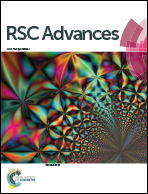On peroxymonosulfate-based treatment of saline wastewater: when phosphate and chloride co-exist
Abstract
Both chloride and phosphate are common inorganic anions in industrial wastewater, however, their effects on peroxymonosulfate (PMS)-based oxidation systems are largely unknown. The present results show that addition of chloride (>1 mM) apparently enhanced the degradation of Acid Orange 7 (AO7) independent of the presence of phosphate (PBS) buffer. Both PBS and chloride favored the degradation of AO7, while PBS played a more important role when they co-existed. The degradation efficiency of AO7 was enhanced by increasing the concentration of PBS and chloride. A maximum of absorbable organic halides (AOX) accumulation was observed; indicating some chlorinated byproducts could be initially generated and further oxidized by increasing the reaction time. It is demonstrated that the PBS/PMS system, with a lower AOX formation at the same chloride concentration, is superior to the Co/PMS system, a typical sulfate radical-based system. The active chlorine species (HClO/Cl2) were found to be the dominant oxidants in the presence of higher chloride concentration (>50 mM) under neutral conditions. The findings of this work may promote the further application of PMS-based oxidation processes in saline effluents treatment.



 Please wait while we load your content...
Please wait while we load your content...